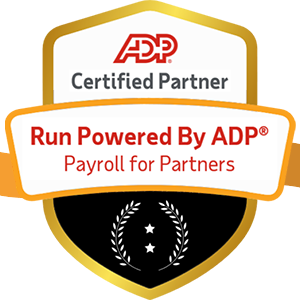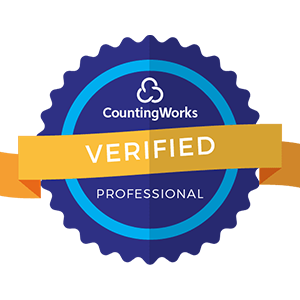
Introduction: In the wake of the COVID-19 pandemic, the world of work has undergone a seismic shift. The hybrid work model, combining remote and in-office work, has emerged as the new normal for many organizations. While this model offers numerous benefits, such as increased flexibility and reduced commute times, it also presents unique challenges. In this article, we'll explore strategies for optimizing the hybrid work model to achieve peak performance and well-being.
The hybrid work model, also known as the "blended" or "flexible" work model, is a combination of remote work and in-office work. This model has been gaining popularity in recent years, but the COVID-19 pandemic has accelerated its adoption. According to a survey by McKinsey & Company, 90% of organizations plan to adopt a hybrid work model post-pandemic.
The hybrid work model offers numerous benefits for both employees and employers. For employees, it provides greater flexibility and autonomy, allowing them to better balance work and personal life. It also reduces commute times and associated stress, which can lead to improved well-being and job satisfaction. For employers, the hybrid model can lead to cost savings on office space and increased productivity, as employees are able to work in environments that suit their needs and preferences.
However, the hybrid work model also presents unique challenges. One of the biggest challenges is maintaining communication and collaboration across remote and in-office teams. It can be difficult to ensure that everyone is on the same page and working towards the same goals when team members are not physically present in the same location. Another challenge is maintaining company culture and a sense of belonging among remote workers, who may feel disconnected from their colleagues and the organization as a whole.
To address these challenges and optimize the hybrid work model, organizations need to adopt a strategic approach that prioritizes communication, collaboration, and employee well-being.

Effective communication is essential for the success of any team, but it becomes even more critical in a hybrid work environment. When team members are not physically present in the same location, it can be easy for misunderstandings and miscommunications to occur. To prevent this, organizations need to establish clear communication protocols and channels.
One effective strategy is to use a variety of communication tools, such as video conferencing, instant messaging, and project management software. By using a mix of synchronous and asynchronous communication tools, teams can stay connected and aligned, regardless of their physical location. It's also important to establish regular check-ins and meetings to ensure that everyone is on the same page and working towards the same goals.
Another key aspect of effective communication in a hybrid work environment is active listening. When communicating remotely, it can be easy to miss nonverbal cues and nuances that are more apparent in face-to-face interactions. To overcome this, team members need to make a conscious effort to actively listen and ask clarifying questions to ensure that they fully understand each other's perspectives and needs.
Collaboration and innovation are essential for the success of any organization, but they can be more challenging in a hybrid work environment. When team members are not physically present in the same location, it can be difficult to foster the kind of spontaneous interactions and brainstorming sessions that often lead to new ideas and breakthroughs.
To overcome this challenge, organizations need to be intentional about creating opportunities for collaboration and innovation. One effective strategy is to use virtual collaboration tools, such as digital whiteboards and mind mapping software, to facilitate brainstorming and ideation sessions. These tools allow team members to work together in real-time, regardless of their physical location, and can help to spark new ideas and insights.
Another key aspect of fostering collaboration and innovation in a hybrid work environment is to create a culture of psychological safety. When team members feel safe to share their ideas and opinions without fear of judgment or retribution, they are more likely to take risks and think outside the box. To create a psychologically safe environment, leaders need to model vulnerability and openness, and encourage team members to share their thoughts and ideas freely.
Employee well-being is a critical component of the hybrid work model. When employees are working remotely, it can be easy for the boundaries between work and personal life to blur, leading to increased stress and burnout. To prevent this, organizations need to prioritize employee well-being and create a culture that supports work-life balance.
One effective strategy is to encourage employees to set boundaries around their work hours and to take regular breaks throughout the day. This can help to prevent overwork and burnout, and ensure that employees have time to recharge and attend to their personal needs. It's also important to provide employees with the resources and support they need to manage their mental health and well-being, such as access to employee assistance programs and mental health resources.
Another key aspect of prioritizing employee well-being in a hybrid work environment is to create opportunities for social connection and belonging. When employees are working remotely, it can be easy to feel isolated and disconnected from their colleagues and the organization as a whole. To prevent this, organizations can create virtual social events and opportunities for team building, such as virtual coffee chats or team-building activities. These events can help to foster a sense of connection and belonging among remote workers, and ensure that they feel valued and supported by the organization.

Leadership plays a critical role in the success of the hybrid work model. In a hybrid work environment, leaders need to be proactive in setting expectations, communicating effectively, and supporting their teams. They also need to be adaptable and open to new ways of working, and willing to experiment with different strategies and approaches to find what works best for their organization.
One key aspect of effective leadership in a hybrid work environment is to prioritize trust and autonomy. When employees are working remotely, it can be tempting for leaders to micromanage and monitor their every move. However, this approach can be counterproductive and lead to decreased motivation and engagement. Instead, leaders need to trust their employees to manage their own time and work, and provide them with the resources and support they need to be successful.
Another important aspect of leadership in a hybrid work environment is to prioritize diversity, equity, and inclusion (DEI). When employees are working remotely, it can be easy for biases and inequities to go unnoticed and unaddressed. To prevent this, leaders need to be proactive in creating a culture of inclusion and belonging, and ensuring that all employees have equal access to opportunities and resources, regardless of their physical location or background.
Measuring success in the hybrid work model can be challenging, as traditional metrics such as attendance and face time are no longer relevant. Instead, organizations need to focus on outcomes and results, and use data and analytics to track progress and identify areas for improvement.
One effective strategy is to use a combination of quantitative and qualitative metrics to measure success. Quantitative metrics, such as productivity and revenue, can provide a high-level view of performance, while qualitative metrics, such as employee engagement and satisfaction, can provide insight into the employee experience and identify areas for improvement.
Another important aspect of measuring success in the hybrid work model is to be transparent and communicative about goals and expectations. When employees are working remotely, it can be easy for them to feel disconnected from the larger goals and objectives of the organization. To prevent this, leaders need to be clear and transparent about what success looks like, and provide regular updates and feedback to keep everyone aligned and motivated.

The hybrid work model is here to stay, and organizations that embrace it and optimize it for peak performance and well-being will be well-positioned for success in the years to come. By prioritizing communication, collaboration, employee well-being, and effective leadership, organizations can create a hybrid work environment that fosters innovation, productivity, and employee satisfaction.
However, the hybrid work model is not a one-size-fits-all solution, and organizations need to be willing to experiment and iterate to find what works best for their unique needs and culture. This may involve a period of trial and error, but by staying focused on the key principles of effective communication, collaboration, and employee well-being, organizations can create a hybrid work environment that is both productive and fulfilling for everyone involved.
As the world of work continues to evolve and change, the hybrid work model will undoubtedly continue to play a significant role. By embracing this model and optimizing it for peak performance and well-being, organizations can position themselves for success in the years to come, and create a work environment that is both productive and fulfilling for everyone involved.
The hybrid work model, combining remote and in-office work, is the new normal for many organizations in the wake of the COVID-19 pandemic. While this model offers numerous benefits, such as increased flexibility and reduced commute times, it also presents unique challenges, such as maintaining communication and collaboration across remote and in-office teams.
To optimize the hybrid work model for peak performance and well-being, organizations need to prioritize communication, collaboration, employee well-being, and effective leadership. By using a variety of communication tools, fostering a culture of psychological safety, prioritizing employee well-being, and embracing a leadership style that prioritizes trust and autonomy, organizations can create a hybrid work environment that is both productive and fulfilling for everyone involved.
As the world of work continues to evolve and change, the hybrid work model will undoubtedly continue to play a significant role. By embracing this model and optimizing it for peak performance and well-being, organizations can position themselves for success in the years to come, and create a work environment that is both productive and fulfilling for everyone involved. The future of work is hybrid, and organizations that embrace this model and optimize it for success will be well-positioned to thrive in the years to come.


